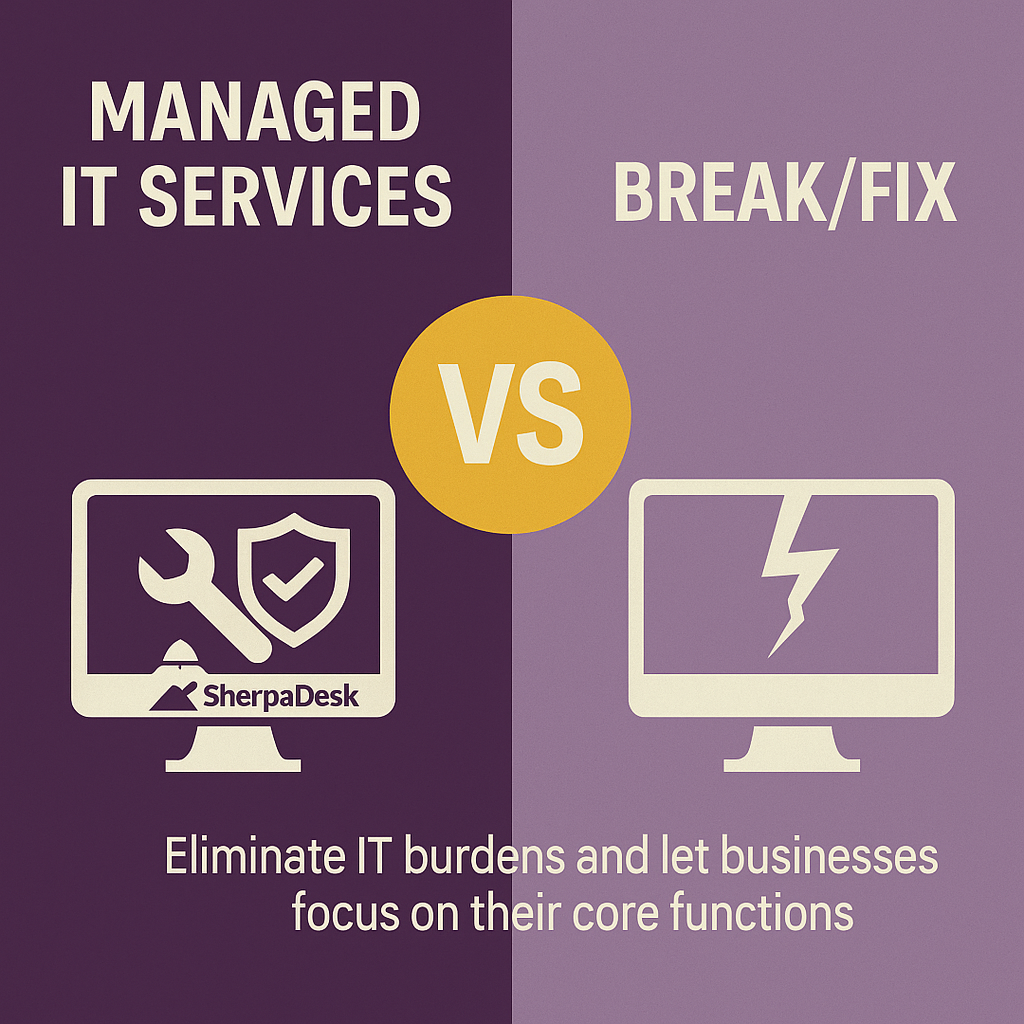Why Managed IT Services Outperform Break/Fix Support
A Cost-Effective Approach for Businesses
In today’s fast-paced digital landscape, businesses rely heavily on robust IT infrastructures to maintain operations and drive growth. When it comes to IT support, two primary models exist: the traditional break/fix approach and the proactive Managed Service Provider (MSP) model. While break/fix services address issues as they arise, MSPs offer continuous monitoring and maintenance to prevent problems before they occur. This article explores the advantages of MSPs over break/fix services, focusing on cost-effectiveness, reliability, and overall business impact.
Understanding the Break/Fix Model
The break/fix model operates on a reactive basis. Businesses contact IT professionals only when issues arise, paying for each service rendered. While this approach may seem cost-effective initially, it often leads to unpredictable expenses and extended downtime.
Key Characteristics of Break/Fix:
- Reactive Support: Issues are addressed only after they occur.
- Variable Costs: Charges are based on time and materials, leading to fluctuating expenses.
- No Preventative Maintenance: Lack of ongoing monitoring increases the risk of recurring problems.
- Extended Downtime: Response times can vary, potentially leading to prolonged operational disruptions.
The Proactive Approach of Managed Service Providers
MSPs offer a proactive IT support model, providing continuous monitoring, maintenance, and support for a fixed monthly fee. This approach aims to prevent issues before they impact business operations.
Key Benefits of MSPs:
Predictable Costs: Fixed monthly fees simplify budgeting and financial planning.
Proactive Maintenance: Continuous monitoring helps identify and resolve issues early.
Reduced Downtime: Faster response times minimize operational disruptions.
Strategic IT Planning: MSPs often assist with long-term IT strategies and infrastructure planning.
Cost Comparison: MSP vs. Break/FixCost Comparison: MSP vs. Break/Fix
Understanding the financial implications of each model is crucial for businesses.
Break/Fix Model:
Hourly Rates: Typically ranges from $100 to $150 per hour.
Unpredictable Expenses: Costs can escalate quickly during major IT failures.
Downtime Costs: Extended outages can lead to significant revenue losses.
Managed Service Provider Model:
Monthly Fees: Generally between $100 to $200 per user.
Predictable Budgeting: Fixed costs allow for better financial planning.
Cost Savings: Studies indicate that MSPs can reduce IT expenses by 25% to 45% and increase operational efficiency by 45% to 65% .
Real-World Scenario
Consider a company with 20 employees:
Break/Fix Approach: If each employee experiences two IT issues monthly, requiring one hour each to resolve at $125 per hour, the monthly cost would be $5,000.
MSP Approach: At $150 per user per month, the total monthly cost would be $3,000, with proactive support reducing the number and severity of issues.
This example illustrates how MSPs not only offer cost savings but also enhance operational efficiency through proactive support.
Conclusion
While the break/fix model may appear cost-effective initially, its reactive nature often leads to higher expenses and operational risks. MSPs provide a proactive, reliable, and cost-effective IT support solution, ensuring businesses can focus on growth without the constant worry of IT disruptions.


